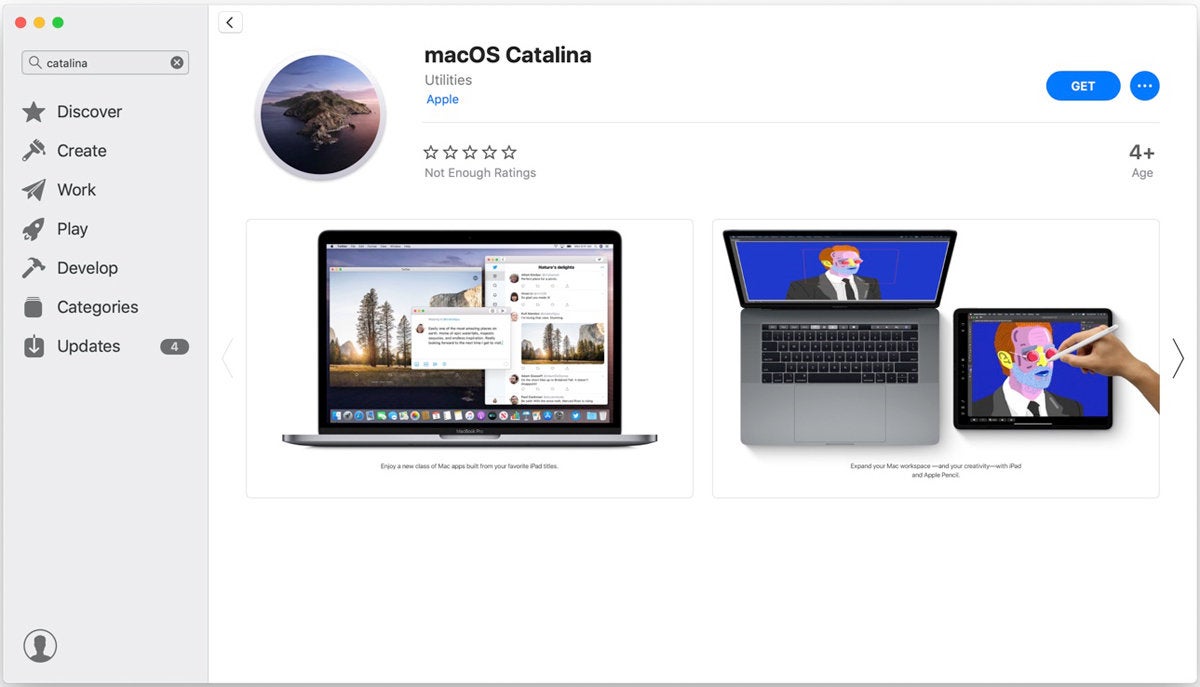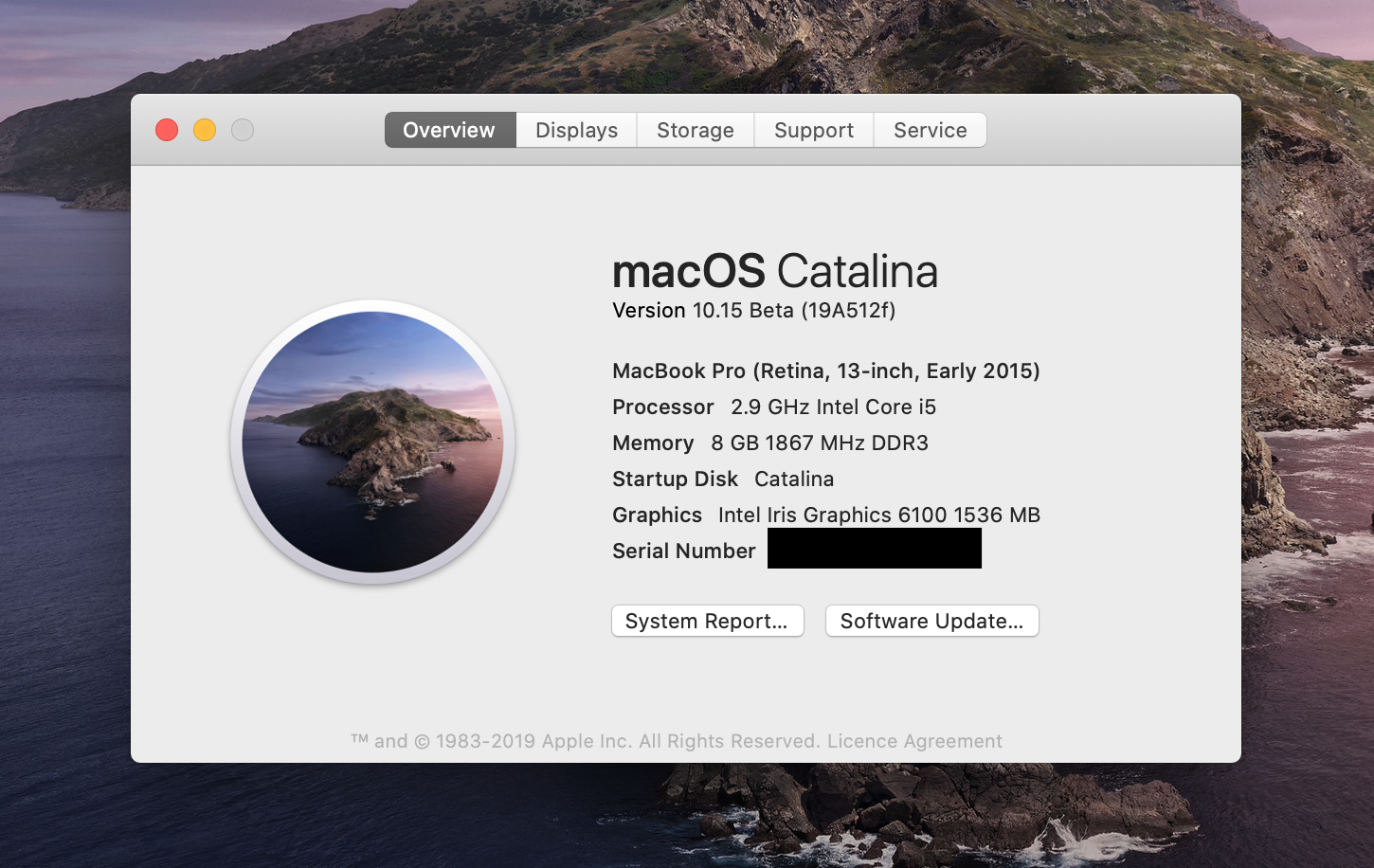Download macOS Catalina ISO File For VMware and VirtualBox (Images). After a year of waiting for macOS Catalina 10.15, Apple company has launched the new version of macOS Operating system which is called macOS Catalina 10.15 with an amazing and outstanding features that is avalibale on Mac App Store for free for Mac Users. Apple company first release the Beta version of Mac Operating system to know the issue and problems of the operating system after 2 or 3 version of Beta. It will release the final version or complete version of the operating system but again it has the issues and errors. Apple company has fixed all the issues during the time and all the expectation of the user has been completed and the common issues,errors and bugs are fixed.
Dec 24, 2019 Step 2: Installer – Create the macOS Catalina flash drive Now that we have a copy of macOS Catalina the next step is to convert it into a flash drive installer. That’s done by first making a GUID formatted flash drive, using Terminal to move the installer image onto the flash drive and then editing the hidden EFI Partition on the flash. MacOS Catalina Patcher (formerly macOS Mojave Patcher, macOS High Sierra Patcher and macOS Sierra Patcher) is a small yet powerful tool that can help you create a bootable USB drive that can be used to install macOS Catalina on Mac computers older than mid 2012, basically acting as a macOS Mojave patch for unsupported Macs.
However, Now you can download and install macOS Catalina 10.15 on VMware workstation pro or VirtualBox on windows. Here you can download macOS 10.15 Catalina ISO file for VMware and Virtualbox. While you want to install macOS Catalina on Vmware or VirtualBox, You need some images and files like macOS Catalina 10.15 ISO for VirtualBox, Download macOS Catalina 10.15 DMG, Download macOS Catalina 10.15 VMDK, Download macOS Catalina 10.15 ISO for Vimware. when you want to macOS Catalina on Virtualbox or VMware you need to download the every images and files which you need while installing on it.
In addition,you can install macOS Catalina on VMware workstation pro and VirtutalBox on windows, Install VMware Tools on macOS Catalina 10.15, How to fix common issues or problems on macosCatalina 10.15, Download macOS Unlocker on VMware Workstations. which all of these articles will help you to use macOS Catalina on VMware or VirtualBox on Windows
Download macOS Catalina ISO File For VMware and VirtualBox
Many of you are confused that,this all files are available for macOS Catalina 10.15 to download, why? and what is the different between them like ISO file, DMG file, Images file and VMDK? Here, I will Explain each of them.
VMDK is called ( Virtual Machine Disk File) and ISO is a Physical disk. for the virtualization purpose we need VMDK and ISO file to use but in the different method. DMG file are available in App store which we need this file while we install real mac for the mac user who install Mac Operating System on mac like iPad, Mac Book and many more apple devices.
Hereby, when you want to install macos Catalina on VMware workstation or VirtualBox , you need to create VMDK file and ISO file because this file are need for the virtualization purpose and when you use ISO file for the installation of macOS Catlaina 10.15 on VMware or VirtualBox. you will not face any problem during the installation process.
So,Now you will get the ISO file in different paltform like Google Drive and MediaFire. we are trying to make it easy and ready for you each files like ISO file, Images file, VMDK file and DMG file to get it from here. you can download them all and install it on VMware and VirtualBox.
we have updated the latest version of the ISO file for you to download
Related Articles
- macOS Catalina 10.15 DMG file Download (Updated)
- macOS Catalina 10.15 VMDK File Download
Download macOS Catalina ISO File ( Updated)
Download macOS Catalina ISO File from Google Drive
- macOS Catalina 10.15 ISO File – Direct Link
Download macOS Catalina ISO File from MediaFire
- macOS Catalina 10.15 ISO file -Media Fire
You need to read this two articles for the installation of the macOS Catalina 10.15 on VMware and Virtualbox

macOS Catalina ISO Download For VMware
We have uploaded the macOS Catalina ISO File for you in above. you download it from google drive or MediaFire which is the latest update of the file for you and you will need this ISO file while you want to install macOS Catalina 10.15 on VMware workstation pro 15 or older on Windows 10 or 7. The ISO file are ready and complete for you to download
macOS Catalina ISO Download For VirtualBox
macOS Catalina ISO file for virtualbox are same as ISO file for VMware workstation pro. Now, Just you need to create it for Virtualbox . you will need this file while you install macOS Catalina 10.15 on VirtualBox on windows. you can download the ISO file from above it safe and secure plus updated.
macOS 10.15 Catalina Download DMG
DMG file are available in App Store which you can download it from there. DMG file are used for real mac like you want to install Mac Operating System on Mac or Apple Devices. it is free you can download it from the main website or App store.However, macOS Catalina 10.15 has many good features like Updates on Photos, Apple Music,Podcasts and TV are availble on macOS Catalina 10.15, High security and privacy for protection of the users, You can have voice access to all mac Devices, Huge Updates on Reminders and Safar, Apple watch is connectable to macOS Catalina and iPad App are available on macOS Catalina 10.15 and many more amazing features like Dark Mode Feature.
Conclusion
When you want to install macOS Catalina 10.15 on VMWare workstation or VirtualbBox. you need to download VMDK file plus ISO file then you will be able to install Mac Operating system on Windows. here we have provided for you the updated file. and you can download DMG file from the App store of the Apple.
These advanced steps are primarily for system administrators and others who are familiar with the command line. You don't need a bootable installer to upgrade macOS or reinstall macOS, but it can be useful when you want to install on multiple computers without downloading the installer each time.
What you need to create a bootable installer

Create Macos Catalina Bootable Usb On Windows 10
- A USB flash drive or other secondary volume, formatted as Mac OS Extended, with at least 12 GB of available storage
- A downloaded installer for macOS Big Sur, Catalina, Mojave, High Sierra or El Capitan
Download macOS
- Download: macOS Big Sur, macOS Catalina, macOS Mojave or macOS High Sierra
These will be downloaded to your Applications folder as an app named Install macOS [version name]. If the installer opens after downloading, quit it without continuing installation. To get the correct installer, download from a Mac that is using macOS Sierra 10.12.5 or later, or El Capitan 10.11.6. Enterprise administrators, please download from Apple, not a locally hosted software-update server. - Download: OS X El Capitan
This will be downloaded as a disk image named InstallMacOSX.dmg. On a Mac that is compatible with El Capitan, open the disk image and run the installer within, named InstallMacOSX.pkg. It will install an app named Install OS X El Capitan into your Applications folder. You will create the bootable installer from this app, not from the disk image or .pkg installer.
Use the 'createinstallmedia' command in Terminal
- Connect the USB flash drive or other volume that you're using for the bootable installer.
- Open Terminal, which is in the Utilities folder of your Applications folder.
- Type or paste one of the following commands in Terminal. These assume that the installer is in your Applications folder and MyVolume is the name of the USB flash drive or other volume you're using. If it has a different name, replace
MyVolumein these commands with the name of your volume.
Big Sur:*
Catalina:*
Mojave:*
High Sierra:*
El Capitan:
* If your Mac is using macOS Sierra or earlier, include the --applicationpath argument and installer path, similar to the way this is done in the command for El Capitan.
After typing the command:
- Press Return to enter the command.
- When prompted, type your administrator password and press Return again. Terminal doesn't show any characters as you type your password.
- When prompted, type
Yto confirm that you want to erase the volume, then press Return. Terminal shows the progress as the volume is erased. - After the volume has been erased, you may see an alert stating that Terminal would like to access files on a removable volume. Click OK to allow the copy to proceed.
- When Terminal says that it's been completed, the volume will have the same name as the installer you downloaded, such as Install macOS Big Sur. You can now quit Terminal and eject the volume.
Use the bootable installer
Determine whether you're using a Mac with Apple silicon, then follow the appropriate steps:
Apple silicon
- Plug the bootable installer into a Mac that is connected to the internet and compatible with the version of macOS you're installing.
- Turn on your Mac and continue to hold the power button until you see the startup options window, which shows your bootable volumes and a gear icon labelled Options.
- Select the volume containing the bootable installer, then click Continue.
- When the macOS installer opens, follow the onscreen instructions.

Create Macos Catalina Bootable Usb Terminal
Intel processor
- Plug the bootable installer into a Mac that is connected to the internet and compatible with the version of macOS you're installing.
- Press and hold the Option (Alt) ⌥ key immediately after turning on or restarting your Mac.
- Release the Option key when you see a dark screen showing your bootable volumes.
- Select the volume containing the bootable installer. Then click the up arrow or press Return.
If you can't start up from the bootable installer, make sure the External Boot setting in Startup Security Utility is set to allow booting from external media. - Choose your language, if prompted.
- Select Install macOS (or Install OS X) from the Utilities window, then click Continue and follow the onscreen instructions.
Learn more
For more information about the createinstallmedia command and the arguments that you can use with it, make sure the macOS installer is in your Applications folder, then enter the appropriate path in Terminal:
- Big Sur: /Applications/Install macOS Big Sur.app/Contents/Resources/createinstallmedia
- Catalina: /Applications/Install macOS Catalina.app/Contents/Resources/createinstallmedia
- Mojave: /Applications/Install macOS Mojave.app/Contents/Resources/createinstallmedia
- High Sierra: /Applications/Install macOS High Sierra.app/Contents/Resources/createinstallmedia
- El Capitan: /Applications/Install OS X El Capitan.app/Contents/Resources/createinstallmedia
Create A Macos Catalina Bootable Usb Installer
A bootable installer doesn't download macOS from the internet, but it does require an internet connection to get firmware and other information specific to the Mac model.
